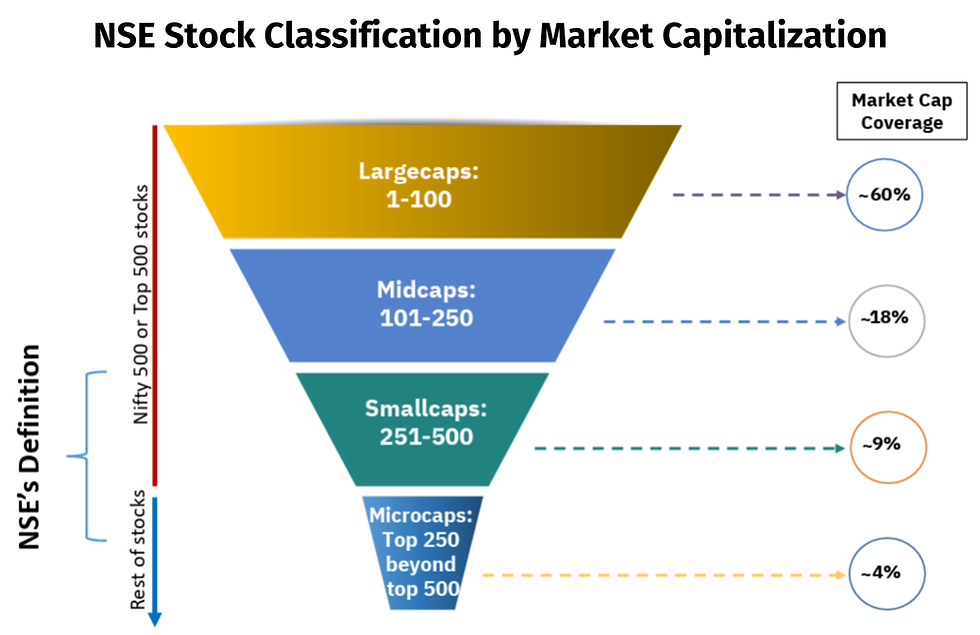Decoding The Fuss Around Factor Investing
- Akshay Nayak
- Dec 25, 2024
- 3 min read
Factor investing is a hybrid, rule based investing strategy. It combines elements of index investing and active management of the portfolio. Factor investing is slowly gaining popularity in India over the past few years. Most investors perceive factor investing as a way to earn better returns than a broad market index without taking on the level of risk that comes with pure active management strategies.

But what does factor investing involve? Does factor investing really offer better returns than a broad market index? What are the risks associated with factor investing? Should investors implement factor investing strategies in their portfolios? These are the questions that I will answer today.
Factor investing involves picking a set of stocks from a set universe of stocks. In most cases the stock universe is a broad market index. A set of stocks are picked from the chosen index. They are then held passively over time. This results in the creation of a factor based index. Stocks in a factor based index are picked based on a set of quantifiable characteristics. These characteristics are known as factors. They are common to each stock in a particular factor based index. Some of the most popular factors are given in the graphic below.

Each of these factors drive excess returns in stocks. Factor based indices have clear rules for stock selection. For instance a low volatility index picks a basket of stocks that exhibit the least variability in daily returns over the preceding 12 months. Selection criteria for various other factor based strategies are given in the graphic that follows.

Factor based strategies mitigate the need to study valuations, accounting metrics or financial statements when picking stocks. Also, stocks that satisfy the selection criteria for most of these factors are mainly those of fundamentally sound companies.
This primarily implies that the companies have a stable business, clean books of accounts and well established reputations. So, investors can be confident of holding an equity portfolio of reasonable quality when employing factor based strategies. Furthermore, factor based strategies combine elements of passive investing and active management. Some factor based strategies therefore offer investors the potential to earn better risk adjusted returns.

In other words, they offer investors higher long term returns while exposing them to a relatively lower degree of risk. This contradicts the traditional notion that investors wishing to beat the market must take a higher risk. But these benefits do not mean that factor based strategies are immune to drawbacks and risks.
A factor based index fund is a passively managed active mutual fund. Stocks in the fund are selected based on clear rules and criteria. The curator of the factor based index can always change the criteria for stock selection in the future. If this were to happen, the underlying index fund’s risk factors and expected returns may also change accordingly. This is known as curation risk.
There is also a real possibility that long term returns from factor based strategies may be lower than the returns from broad market indices on an absolute basis. This means that factor investing is not a silver bullet. Therefore, investors who wish to use factor based strategies purely to outperform broad market indices may be left disappointed.

This just leaves the two most important questions to be answered. Should investors employ factor investing strategies in their portfolios? What should those who wish to employ factor investing strategies keep in mind? For the essential purpose of achieving our financial goals, factor strategies are not a necessity. Returns offered by traditional broad market large cap indices would be sufficient for this purpose.
Investors must remember that most factor definitions are highly arbitrary. Stock selection criteria for most strategies are designed to cherry pick stocks that produce favourable results during back tests. Those who wish to employ factor strategies inspite of this may do so. But they must do so if and only if :
A. They clearly understand the concepts, benefits and risks underlying the factor strategy of their choice
B. They clearly understand the stock selection criteria underlying their preferred strategy
C. They appreciate the inherent characteristics of the stocks that constitute their chosen factor index.
D. They are willing to accept a higher risk adjusted return than a broad market index over the long term, at the risk of ending up with a lower absolute return (depending on the strategy chosen)



Comments